Daisuke Moriwaki
Matching Theory-based Recommender Systems in Online Dating
Aug 24, 2022

Abstract:Online dating platforms provide people with the opportunity to find a partner. Recommender systems in online dating platforms suggest one side of users to the other side of users. We discuss the potential interactions between reciprocal recommender systems (RRSs) and matching theory. We present our ongoing project to deploy a matching theory-based recommender system (MTRS) in a real-world online dating platform.
A Real-World Implementation of Unbiased Lift-based Bidding System
Feb 23, 2022
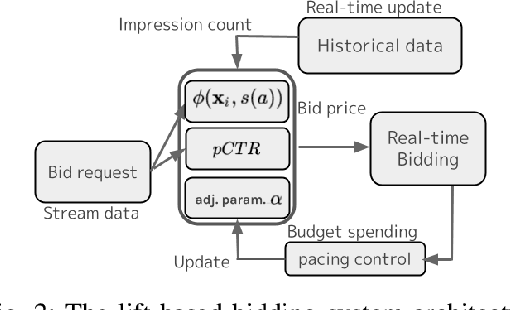
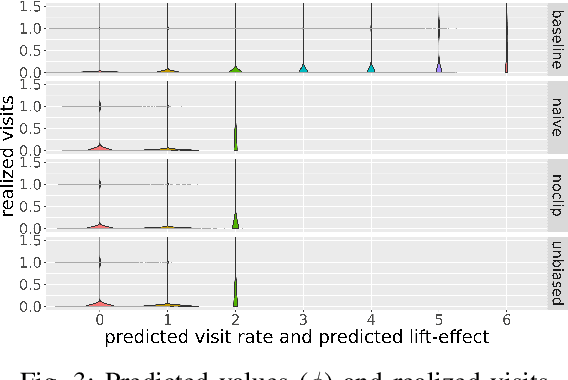
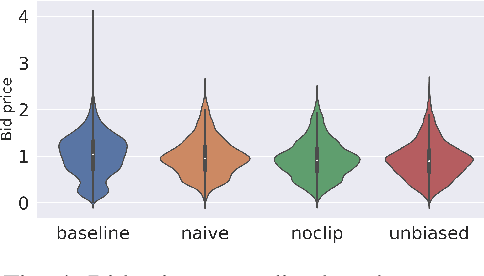
Abstract:In display ad auctions of Real-Time Bid-ding (RTB), a typical Demand-Side Platform (DSP)bids based on the predicted probability of click and conversion right after an ad impression. Recent studies find such a strategy is suboptimal and propose a better bidding strategy named lift-based bidding.Lift-based bidding simply bids the price according to the lift effect of the ad impression and achieves maximization of target metrics such as sales. Despiteits superiority, lift-based bidding has not yet been widely accepted in the advertising industry. For one reason, lift-based bidding is less profitable for DSP providers under the current billing rule. Second, thepractical usefulness of lift-based bidding is not widely understood in the online advertising industry due to the lack of a comprehensive investigation of its impact.We here propose a practically-implementable lift-based bidding system that perfectly fits the current billing rules. We conduct extensive experiments usinga real-world advertising campaign and examine the performance under various settings. We find that lift-based bidding, especially unbiased lift-based bidding is most profitable for both DSP providers and advertisers. Our ablation study highlights that lift-based bidding has a good property for currently dominant first price auctions. The results will motivate the online
Aggregate Learning for Mixed Frequency Data
May 20, 2021



Abstract:Large and acute economic shocks such as the 2007-2009 financial crisis and the current COVID-19 infections rapidly change the economic environment. In such a situation, the importance of real-time economic analysis using alternative datais emerging. Alternative data such as search query and location data are closer to real-time and richer than official statistics that are typically released once a month in an aggregated form. We take advantage of spatio-temporal granularity of alternative data and propose a mixed-FrequencyAggregate Learning (MF-AGL)model that predicts economic indicators for the smaller areas in real-time. We apply the model for the real-world problem; prediction of the number of job applicants which is closely related to the unemployment rates. We find that the proposed model predicts (i) the regional heterogeneity of the labor market condition and (ii) the rapidly changing economic status. The model can be applied to various tasks, especially economic analysis
Online-to-Offline Advertisements as Field Experiments
Oct 21, 2020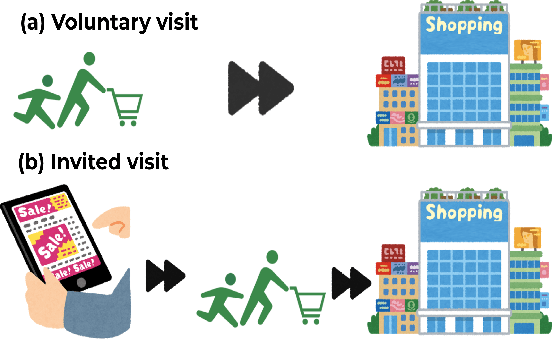

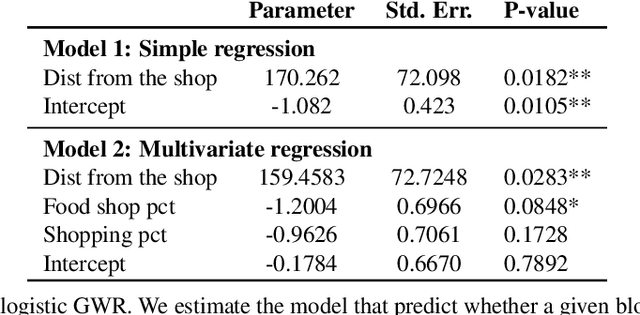
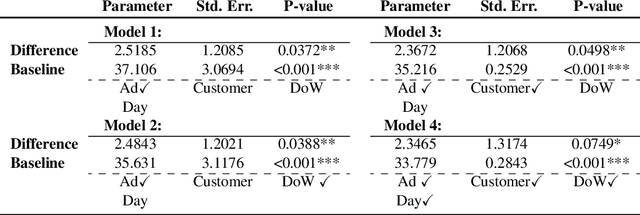
Abstract:Online advertisements have become one of today's most widely used tools for enhancing businesses partly because of their compatibility with A/B testing. A/B testing allows sellers to find effective advertisement strategies such as ad creatives or segmentations. Even though several studies propose a technique to maximize the effect of an advertisement, there is insufficient comprehension of the customers' offline shopping behavior invited by the online advertisements. Herein, we study the difference in offline behavior between customers who received online advertisements and regular customers (i.e., the customers visits the target shop voluntary), and the duration of this difference. We analyzed approximately three thousand users' offline behavior with their 23.5 million location records through 31 A/B testings. We first demonstrate the externality that customers with advertisements traverse larger areas than those without advertisements, and this spatial difference lasts several days after their shopping day. We then find a long-run effect of this externality of advertising that a certain portion of the customers invited to the offline shops revisit these shops. Finally, based on this revisit effect findings, we utilize a causal machine learning model to propose a marketing strategy to maximize the revisit ratio. Our results suggest that advertisements draw customers who have different behavior traits from regular customers. This study's findings demonstrate that a simple analysis may underrate the effects of advertisements on businesses, and an analysis considering externality can attract potentially valuable customers.
Unbiased Lift-based Bidding System
Jul 09, 2020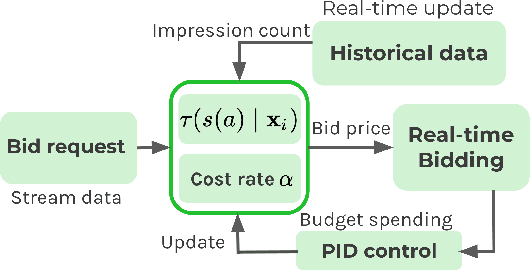
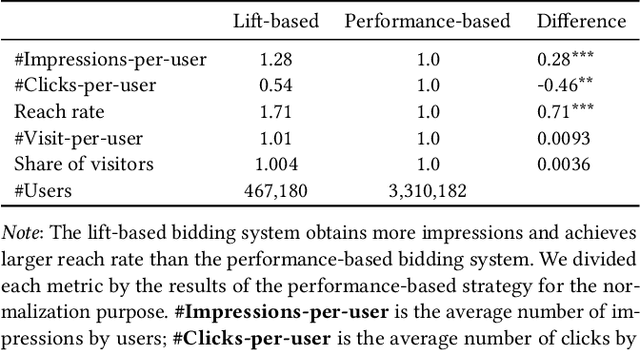
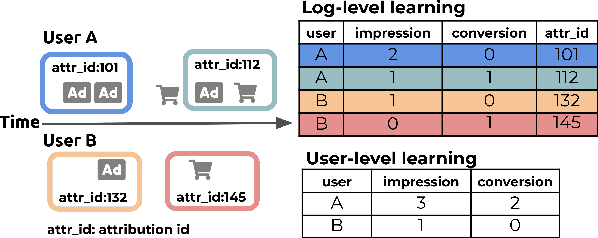
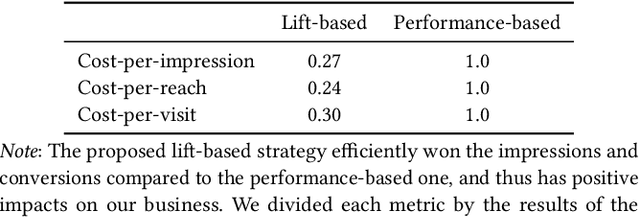
Abstract:Conventional bidding strategies for online display ad auction heavily relies on observed performance indicators such as clicks or conversions. A bidding strategy naively pursuing these easily observable metrics, however, fails to optimize the profitability of the advertisers. Rather, the bidding strategy that leads to the maximum revenue is a strategy pursuing the performance lift of showing ads to a specific user. Therefore, it is essential to predict the lift-effect of showing ads to each user on their target variables from observed log data. However, there is a difficulty in predicting the lift-effect, as the training data gathered by a past bidding strategy may have a strong bias towards the winning impressions. In this study, we develop Unbiased Lift-based Bidding System, which maximizes the advertisers' profit by accurately predicting the lift-effect from biased log data. Our system is the first to enable high-performing lift-based bidding strategy by theoretically alleviating the inherent bias in the log. Real-world, large-scale A/B testing successfully demonstrates the superiority and practicability of the proposed system.
Detecting multi-timescale consumption patterns from receipt data: A non-negative tensor factorization approach
Apr 28, 2020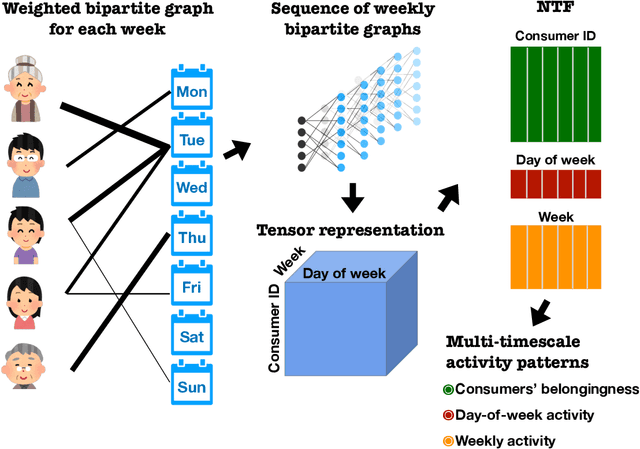
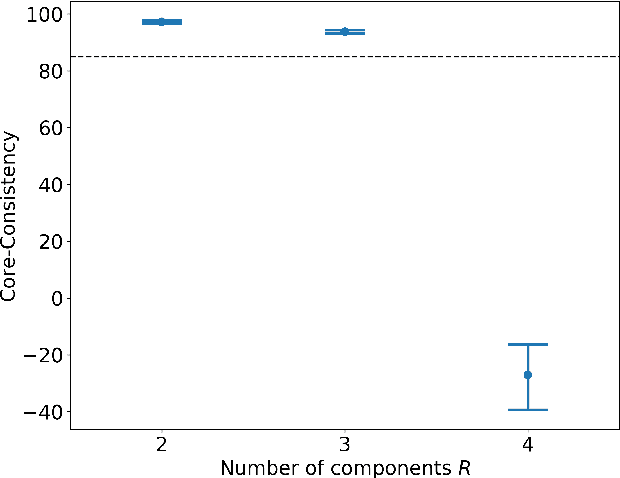
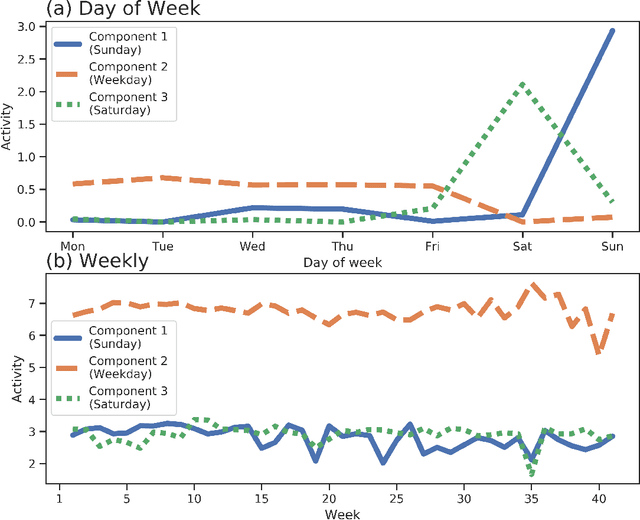
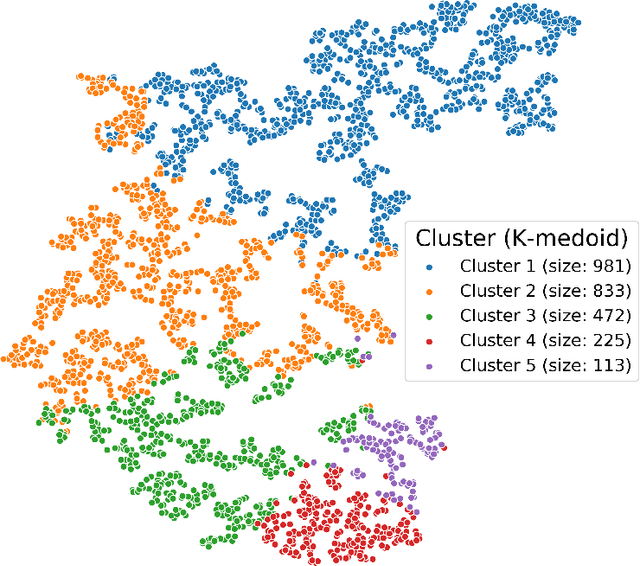
Abstract:Understanding consumer behavior is an important task, not only for developing marketing strategies but also for the management of economic policies. Detecting consumption patterns, however, is a high-dimensional problem in which various factors that would affect consumers' behavior need to be considered, such as consumers' demographics, circadian rhythm, seasonal cycles, etc. Here, we develop a method to extract multi-timescale expenditure patterns of consumers from a large dataset of scanned receipts. We use a non-negative tensor factorization (NTF) to detect intra- and inter-week consumption patterns at one time. The proposed method allows us to characterize consumers based on their consumption patterns that are correlated over different timescales.
A Contextual Bandit Algorithm for Ad Creative under Ad Fatigue
Aug 21, 2019



Abstract:Selecting ad creative is one of the most important task for DSPs (Demand-Side Platform) in online advertising. DSPs should not only consider the effectiveness of the ad creative but also the user's psychological status when selecting ad creative. In this study, we propose an efficient and easy-to-implement ad creative selection algorithm that explicitly considers wear-in and wear-out effects of ad creative due to the repetitive ad exposures. The proposed system was deployed in a real-world production environment and tested against the baseline. It out-performed the existing system in most of the KPIs.
 Add to Chrome
Add to Chrome Add to Firefox
Add to Firefox Add to Edge
Add to Edge